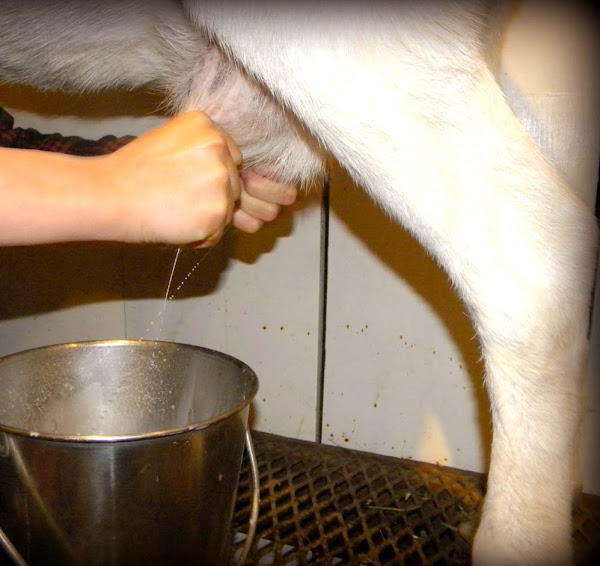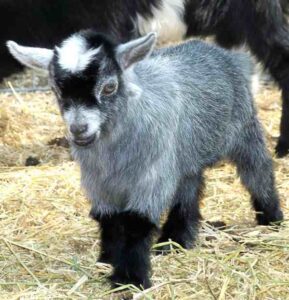Milking a goat is the most important part for you if you are raising a few goats for fresh milk supply. For a few goats or a small herd, you don’t need to use any auto or electric milker. You can easily milk your goats by hand. Previously we have described about how to milk a goat.
Here we are going to describe more about how to milk a goat by hand. Milking a goat by hand is very easy, even you can do it without any prior experience. Although some people think milking a goat is difficult than milking a cow.
But as far as we have experienced, milking a goat by hand is much easier than milking a cow. With perseverance, patience and a willing and lactating participant, you can easily lean milking goats by hand and become an expert goat milker.
Just follow the step by step process for milking a goat by hand. Practice makes perfect and you will be an expert goat milker if you milk your goats regularly.
Things You Will Need For Milking Goats by Hand
For milking your goats by hand, you will need some essential things. The necessary things for milking goats are listed below.
- Collar
- Feeder
- Grain
- Metal Bucket
- Milking Stand
- Washing water and boiled washing cloth.
- Post milking balm, dip or spray for preventing your goats from infection.
How to Milk a Goat by Hand
The steps for milking a goat by hand are listed below.

Read the steps attentively and do every steps very carefully.
Prepare the Milk Bucket & Grain
Keep the feeder on the milking stand. Then place some grain in it (place approximately 1 pound of grain). Don’t keep excessive grain in the feeder. Because excessive amount of grain may cause bloat in goats.
Catch the Goat for Milking
Catch the goat for milking, after placing grain on the feeder. If your doe has a collar, then you can hold onto the collar. Or clip a leash onto the collar and lead her to the milking place.
Separate the Milking Does From Other Goats
Milking process should be done in a separate place. It will be better if you make a dedicated room/place for milking your does. Presence of other goats during milking will disturb the milking doe. So bring the does in a separate place while milking.
Set the Doe on the Milking Stand
Lead the doe to the milking stand by alluring her with grain. She will stand on her feet on the milking stand if she find something interesting to eat.
And if the doe knows the feed or grain is there, then she will put her head through the stanchion. Clip the stanchion closed, once the doe put her head through it.
The stanchion should not allow the doe to slip her head back through once closed. But it should be loose and comfortable enough for the goat.
By doing the same process regularly, your does will easily come up and jump onto the stanchion. There are no stress involved with this process.
Wash the Udder & Teats of Your Doe
Before milking, always wash down the udder and teats of the goat properly with the sterilized cloth and warm water. Doing this removes dirt, loose hair and piece of manure clinging on and the warmth relaxes the doe and helps with milk letdown.
During this time, performing udder massage cause the release of oxytocin, triggering milk letdown. So washing the udder and teats with sterilized warm cloth is very important.
Place Bucket
After washing the udder and teats of the milking doe properly, place the bucket on the stand. Place the bucket slightly in front of the udder of the goat.
Milking
Wrap your forefinger and thumb around the base of the teat tightly to trap the milk inside the teat. Squeeze with your middle finger, then your ring finger, and then your pinky, in one smooth, successive motion.
Never forget to keep your grip tight on the base of the teat. Otherwise the milk will slip right back up into the udder, instead of going into the bucket.
The first squeeze from the teat may contain bacteria and dirt. So direct the first squeeze outside the bucket. While milking, you can also use a fewer finger when you will be an expert in milking goats.
Relax your grip on the base of the teat to allow milk to refill the teat. Squeeze one teat and let the other refills. And do the process again and again.
With regular practice, you will find an efficient rhythm for milking your goats. Stop squeezing when you see that there is not much milk left. With a deflated appearance, the teats will be flaccid.
Massage the udder of your doe again to release the remaining milk. The amount of milk per milking vary depending on the goat breeds you are raising.
Take the Bucket Away
After milking, take the bucket away and keep it in a safe place far from other goats or animals. Keep the bucket in such a place where it won’t get knocked over by a curious or oblivious goat or other animals.
Use Teat Dip
After milking, don’t let the doe go. Use a teat dip after milking her. Doing this will keep bacteria away from the teats, and this will help to keep your goat healthier.
Release the Goat
After using a teat dip, grab the goat’s collar, unclip the stanchion and let her go.
Tips for Milking Goats
- Practice makes perfect. So practice milking your goat as much as you can. And gradually you will learn milking goats perfectly (like an expert).
- Never forget to wash the udder and teats off before you start milking. Washing udder and teats with warm water also helps to relax the udder and releasing more milk.
- While milking, keep enough grain in front of the goat. Doing this will keep her entertained while you milk her.
- Don’t rely on just your hand strength. A half twist to the teat up near the udder will help seal off the top. Do not pull or twist the teat. It causes pain to the goat, and problems for you!
- If you notice less release of milk, try massaging the udder for about thirty seconds. Doing this will bring pretty more milk out.
- Never forget to use teat dip after milking. You can also use some commercial teat dips, balms and sprays. These are not only helpful for keeping the goats healthier but also helpful for preventing mastitis disease.
- Never disturb the goat while milking. So keep other goats and children away. It will be better if you can manage a dedicated place/room for milking your goats.






